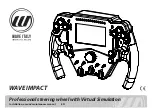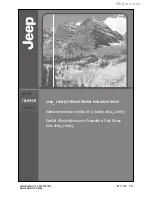
118
Choreo has a Positon attribute called P/T Mode that alters the way fades are
calculated when you advance from one position to another. If you record a
memory or a cue using specific Pan and Tilt values and specify the P/T Mode to
be Linear Movement, the end points of the move do not change, but the
intermediate steps of Pan and Tilt needed to get from the first position to the
second position do change. It becomes a transition that forces the Pan/Tilt
mechanism to travel the beam of light in a straight line:
Zoom Example
Programming lights using real-world values allows you to swap one fixture for
another and get predictable results. Far more useful is the fact that the same
values are used to control different types of lights in a similar fashion. Looking at
the zoom attribute demonstrates this again.
It is quite common to have two or more different types of lights in today's lighting
rigs. Matching beam sizes is a process of grabbing one type of light, setting its
zoom, then selecting the other and tweaking it to match. You cannot grab both
and crank the wheel and hope to get matching results. Natural Language Control
eliminates this unnecessary practice.
Here are two lights; one that has a zoom range of 19° to 70°, the other from 10° to
50°. Cue 1 calls for the lights to use a zoom of 20 degrees:
Summary of Contents for choreo
Page 2: ......
Page 4: ......
Page 8: ......
Page 27: ...Hardware Overview 19 Here is the pin assignments for Choreo s Aux port ...
Page 148: ......
















































